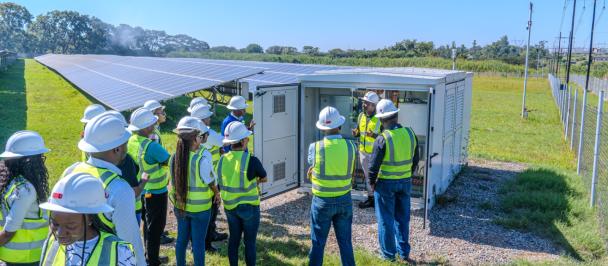cashew nuts nursery at the Mongu agriculture resource center in Western Province.
Participants at a workshop held by the Ministry of Lands and Natural Resource (Department of Climate Change and Natural Resources Management) through the BIOFIN Zambia Project Team have recommended to develop an implementation plan for the National Green Finance Policy, which is being proposed for establishment together with Green Bond Guidelines which will be spearheaded by the Securities and Exchange Commission (SEC) and the listing rules which will be led by the Lusaka Securities exchange (LuSE)
The workshop, which focused on Green Finance orientation, was held from the 4th to the 5th of April 2019 at Chaminuka Lodge and Game Reserve in Chongwe District and attracted participants from key government Ministries, Quasi-government institutions, the financial sector as well as local and international resource persons that provided insights on the importance of green finance and its contribution to ameliorating climate change mitigation and adaptation as well as biodiversity conservation and its sustainable use. Its main objective was to build capacity among key stakeholders that are earmarked to constitute the Technical Working Group to spearhead the development of Zambia’s National Green Finance Policy (NGFP) and Implementation Plan.
United Nations Development Programme (UNDP), Deputy Country Director, Mr. Sergio Valdini said that the use of green financing gives a ray of hope for specific initiatives that enhance favorable environmental protection outcomes, especially in the face of a tight fiscal space that Zambia is facing which has resulted in low budgetary allocation and releases to environmental protection.
He also indicated that Government has a critical role to play in the legislation, harmonization and creation of green standards and tariffs, financing for sustainable natural resource-based green economies and focusing on decision making towards Sustainable Development Goals. However, market driven transformation is also needed from the financial sector who are adapting their business models, skills and incentives to match the risk-reward and maturity needs of sustainable investments.
The Deputy Country Director further stressed the importance of mainstreaming gender in the transition to environmental sustainability given that women continue to face disproportionate impacts both from biodiversity loss and gender-blind conservation measures even though they play a critical role as primary land managers and resource users.
The workshop was a result of various consultative meetings with stakeholders in 2018 facilitated by BIOFIN Zambia.
The consultative meetings resulted in prioritization of seven (7) finance solutions that are part of Zambia’s Biodiversity Finance Plan (BFP). A further consultative meeting that was convened at Chaminuka Lodge on the 8th of February 2019 for Directors at the Ministry of Finance, National Development Planning, Environmental Management and Ministry of Lands and Natural Resources unanimously agreed that the development of Zambia’s National Green Finance Policy was necessary.
During the Chaminuka workshop, BIOFIN Country Team Leader, Mr. Bruno Mweemba indicated that the budgetary allocation for Environmental Protection (biodiversity inclusive) had remained low at around 0.6% of the national budget compared to other budget functions such as general public services (30.4%), economic affairs (26.1%), education (17.9%), health (9.3%), Defense (6.2%), public order and safety (4%) etc. It was further indicated that of the 0.6% allocation towards environmental protection, Government had only managed to finance 26% of the budget whilst the larger portion of the budget was financed through donor support. Following the costing of the finance needs for the NBSAP and the National Climate Change Implementation Plan, Mr. Mweemba indicated that Zambia had an annual deficit of over $960m per annum through to 2030 hence the need for innovative finance mechanisms to bridge this finance gap.
Centre for International Climate Research (CICERO) Senior Advisor, Mr. Alexander Berg presented an overview on green finance and further outlined the various instruments that characterise the green finance market. As part of his reflections, he indicated that Green finance cannot fix biodiversity, climate change and desertification alone which still calls for behavioral change. He further guided that there is need to always start small by focusing on obvious green aspects such as energy, resilient agriculture and forest regeneration.
Through the provision of definition of green bonds, the issuance process and global trends Berg indicated that investors are increasingly paying attention to Environmental, Social and Governance (ESG) issues and that investors are divesting from non-sustainable assets thus an increase in demand for green bonds. He explained that green bonds are like any other bonds but emphasises that proceeds are to be directed to green projects which are defined in a green bond framework by the issuer.
Climate Bonds Initiative (CBI), Programme Manager for Africa Markets, Mr. Olumide Lala noted that in Africa, there are several challenges impacting on the growth of green bond markets which include; “volume of bankable projects and robust project pipelines, small investments that would not be attractive to large institutional investors, risk-averse investors with limited capacity to analyze green investments and perceived costs of issuing green bonds”. He, however, indicated that some of the key issues to consider when developing green bonds markets may include; Multi-year funded and market-wide programme, Support National High-level Policies and Strategies (NDCs) and partner with all the key market stakeholders to ensure strong buy-in (Capacity Building).
Meanwhile, Senior Advisor for Principles for Responsible Investment (PRI) in Africa Mr. Adrian Bertrand, said the integration of ESG has emerged as a strategy and practice in investment decisions and active ownership. He also emphasized on responsible investing because; (i) Materiality i.e. increasing recognition within the financial community that ESG factors often play a material role in determining risk and return (ii) Market Demand i.e. growing demand from beneficiaries and investors for greater transparency about how and where the money is being invested (iii) Regulation i.e. higher levels of regulatory guidance that incorporating ESG factors is part of an investor’s fiduciary duty to their clients and beneficiaries. Mr. Bertrand also highlighted how South Africa is integrating responsible investments into its financial system and investment process.
A roadmap in designing a Green Financial System, was presented by Africa Network Coordinator for UNEP Finance Initiative and Independent Sustainability Consultant, Ms. Caroline Wakesho Sonje. Ms. Sonje indicated that a Sustainable Finance Roadmap provides direction and policy signals and sets framework that enables the financial sector to better contribute to the transition of a more resilient and sustainable economy, consistent with global, national and regional goals. She highlighted that there was no single formula for developing national sustainable finance road maps.

 Locations
Locations



